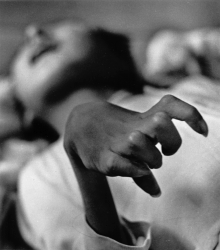This Day in History: 1956-05-01

Minamata disease An epidemic of an unknown disease of the central nervous system is first reported by Dr. Hajime Hosokawa on this day in 1956 in the town of Minamata, Japan. The strange neurological disease stuck quickly, starting with cats, then older humans, then children and newborns. Uncontrolled twitching, convulsions and screaming are among the symptoms. Hosokawa and others suspect the Chisso Chemical Corp. which, it was later found, had been dumping large quantities of waste mercury into the bay.
Victims of Minamata disease were ignored until finally they won a lawsuit in 1973. More lawsuits and investigations continued through 2010. According to the Japanese Ministry for the Environment, there are now about 3,000 certified patients in Kumamoto, Kagoshima and Niigata prefectures, and another 10,000 people who have mercury poisoning symptoms.
Minamata became an international symbol of industrial recklessness with toxic chemicals when photos of victims by W. Eugene Smith were circulated by Life Magazine in June of 1972. These included the photo, above, of Tomoko Uemura’s hand, and another very famous photo of Tomoko in the bath. There is a controversy about displaying the more visually striking photo, and the controversy is described here. In retaliation for his work, Smith was badly beaten by thugs from Chisso and never quite regained his health. He died in 1978, convinced that Chisso played a major role in killing him too. The Environmental History Timeline includes Smith along with Karen Silkwood, Chico Mendes, Ken Saro-Wiwa and far too many others who have been assassinated by industrial interests attempting to subvert human rights and the environment.
An interesting take on Smith and Minamata is found on this blog.
